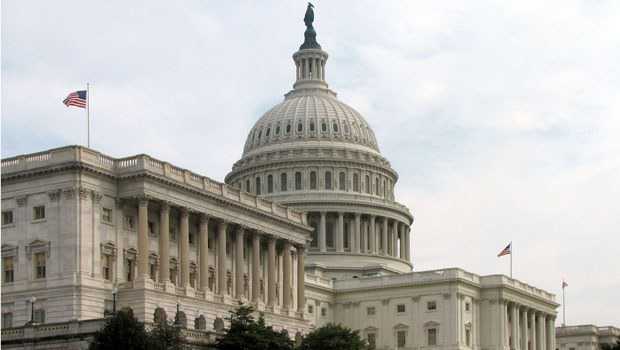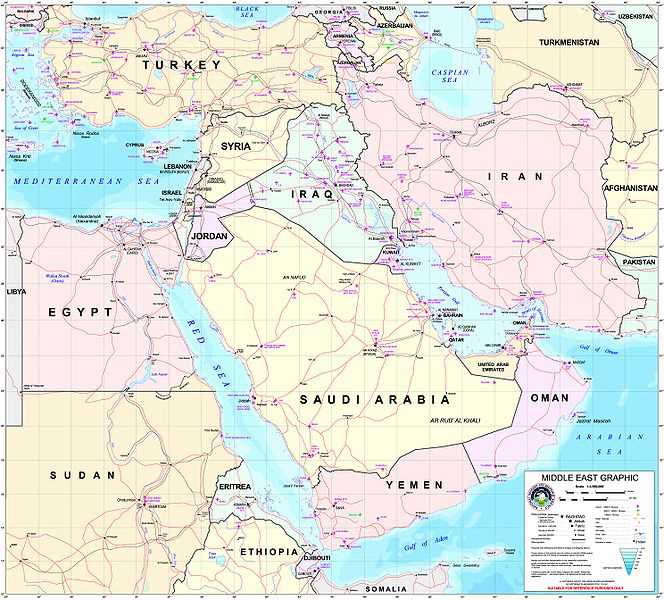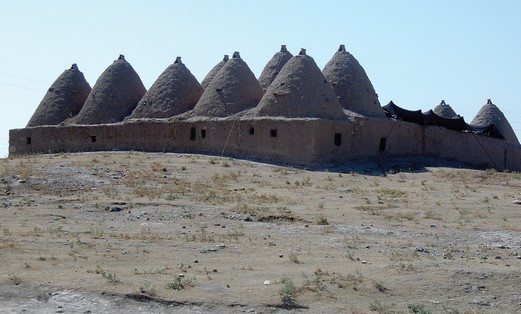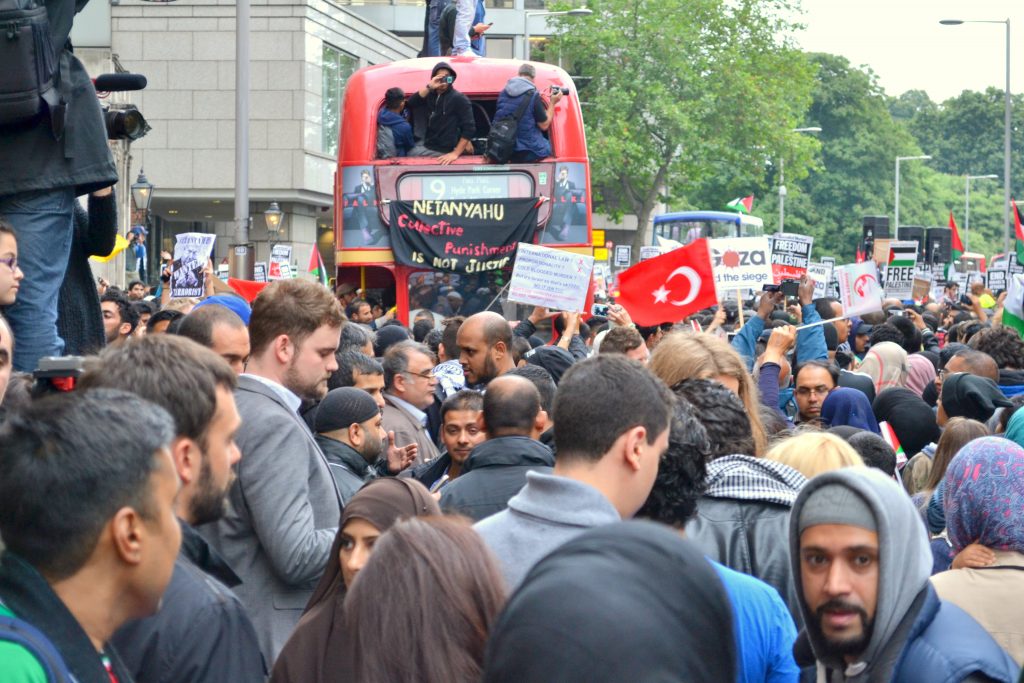|
GREEK VIOLATIONS DURING THE GREEK MILITARY INVASION
IN 1919 AND THE GREEK RETREAT IN 1922
THE INTER-ALLIED CONDEMNATION OF GREECE
I. Introduction:
The Greek military invasion and occupation of western Anatolia (1919-22) is a difficult memory for both Turks and Greeks, and a source of friction and, sometimes, animosity in the modern day. This tragic event that changed the face of western Anatolia forever may better be understood in its proper political context as reported by the victorious World War I Allies in the Inter-Allied Commission’s Report of October 1919 and diplomatic dispatches during the period 1919-23.
II. The Greek Invasion and Occupation of Western Turkey:
On May 14, 1919, British, French, Italian and Greek Allied forces landed at the port of Izmir, in stated accordance with Article 7 of the Armistice of the Port of Mudros which provided, “The Allies have the right to occupy any strategic points in the event of a situation arising which threatens the security of the Allies.” Impatient with the formulation of a treaty and occupation strategy, on May 15, 1919, the Greek Orthodox Metropolite of Izmir conducted a large ceremony to bless the Greek troops, after which Greek forces commenced an inland invasion resulting in a two-year violent occupation of western Anatolia.
The massacres were accompanied by widespread looting and raping. More than 2,500 Turks, many children younger than 14, were detained under inhuman conditions. Greeks also killed members of the Jewish population, and desecrated their cemeteries, homes and businesses. Without seeking permission from the Allies, Greek troops continued their brutal occupation of Western Anatolia, occupying Urla on May 17; Cesme and the southeastern and northeastern parts of Aydin on May 20; Manisa on May 26; Turgutlu, Bayindir and Tire on May 29; and, Odemis, Bergama and Kusadasi by mid June 1919.
The second phase – the retreat of Greek forces from Atatürk’s advancing Turkish forces — did not take place until the summer of 1922. The Greek retreat included massacres as well as the burning of additional hundreds of Muslim and Jewish towns, villages and urban quarters in a scorched earth campaign. Violence against Turkish women was a dominant theme in the Greek retreat.
III. The Inter-Allied Condemnation of Greece:
Reports of the atrocities and other inhumane acts committed against western Anatolian Muslim and Jewish populations led to the formation of a Special Commission of Judicial Inquiry on June 17, 1919. The Commission collected extensive evidence and witnesses, meeting forty-six times between August 12 and October 15. The Commission detailed the atrocities committed by Greek troops and Greek civilians, and concluded that the Greeks were responsible for the massacres and ill treatment of Turkish Muslims and Jews in western Anatolia.
Unwilling to replace Greek troops with Allied troops, the Commission issued no more than a stern condemnation to Greek Premier Venizelos. No criminal prosecutions occurred. The victims were abandoned without redress. In essence, while Greece was condemned, no Allied force wanted to assume the responsibility of a proper occupation or make sure that Greece did. Atrocities against Turks resumed and escalated as Greek forces invaded deeper into Anatolia.
The Commission’s final report consisted of three sections: the established facts, an account of the responsibilities, and the findings and recommendations of the Commission. These sections are summarized as follows:
1. Account of Events Established during the Inter-Allied Inquiry of August 12-October 6, 1919 – Decided in Istanbul, October 7, 1919
The fears of Christian massacres by the Turks – propounded by Greeks – proved unjustified, and the state of security worsened after the Greek occupation. There was no organized Turkish resistance to the landing, and any shots fired by the Turks against Greek troops, were isolated. As Greek soldiers marched through town, they, together with Greek civilians committed numerous acts of violence – including looting, robbing and raping – upon the Turkish civilians. On the first day of the occupation alone, 300-400 Turks were killed or wounded. Greek troops arbitrarily arrested 2500 people, some of them children under 14: these people were mistreated, robbed and detained under horrendous conditions. Many were summarily executed. Except for a few exceptions, Greek officers did nothing to stop the acts of violence of their troops. News of unabated looting in Izmir led to extensive looting and violence against Turks in nearby towns by Greek inhabitants. The Greek High Commissioner acted against the orders of the Entente by ordering the occupation of Aydin, Magnesios and Kassaba.
On June 17, Greek troops killed and wounded 400 defenseless Turks in the village of Menemen. Greek troops carried out armed reconnaissance patrols around Aydin. During these maneuvers, several villages were burned down. The burning of villages was a Greek military policy and systematically implemented.
On June 29, a large number of Turkish women and children were massacred by Greek soldiers, while flee the burning Turkish quarter of Aydin. Fires destroyed two thirds of Aydin. Any houses that were not burned down were looted. The losses caused by the fires have been valued at approximately eight million pounds sterling. In the districts abandoned by Turks fleeing Greek occupation, crop losses were estimated at one million two hundred thousand pounds. Turkish refugees had not returned to their homes at the date of this hearing. In certain areas, such as the Meander valley, entire villages had been ethnically cleansed.
2. Establishment of Responsibilities – Decided in Istanbul, October 11, 1919
The Commission held that responsibility for the atrocities in Izmir and the immediate vicinity on May 15-16 rested with the Greek High Command, although some responsibility was apportioned to the Turkish authorities for allowing prisoners to escape on the day of the landing. “Far from being a civilizing mission, the Greeks’ occupation had assumed the appearance of a conquest and crusade.”
3. Conclusions Put Forth by the Commission – Decided in Istanbul, October 13, 1919
The Commission proposed replacing some of the Greek troops with allied troops as soon as possible, and for the Turkish authority to restore civil administration and reorganize the constabulary. Greek Commander, Colonel Mazarakis, sought to defend the atrocities committed by minimizing their extent, and arguing that the occupation was necessary to protect Greeks living in the area. The Commission dismissed Mazarakis’ arguments on October 14, 1919, and let its findings of October 11 stand.
To download the Inter-Allied Commission Report, please click here.
IV. Greek Violations during the Greek Military Retreat
“The Greek retreat, followed by the scenes at Smyrna, forms a sickening record of bestiality and barbarity.” – British Foreign Office, 1922 (Rumbold to Curzon no. 440, 19 September 1922: FO 371/7891: Gilbert, Rumbold: p. 263)
The Greek occupation was momentarily checked in January and March 1921 following Greek defeat in the two battles of Inonu (January 1921; March 1921). A more decisive Turkish victory during the summer of 1921, at the battle of Sakarya (August-September, 1921), forced the Greeks to retreat from their positions. The Great Offensive of August 1922, however, was the final defeat that sent the Greek troops and civilians fleeing before Mustafa Kemal’s Nationalist armies.
Mustafa Kemal and the Turkish army entered Izmir on September 8, 1922 to the relief and jubilation of the oppressed population. Although Greek troops were unable to burn Izmir before they left, the remaining Armenian population in the city set fires a few days later. These fires, finally under control by September 15, ravaged three quarters of the beautiful “pearl of the Aegean”, including Mustafa Kemal’s headquarters.
The following sections provide examples of the Greek killing wave throughout the already decimated regions of Western Anatolia and the Aegean, including the final desolation of Izmir.
1. The Manisa Massacres:
While fleeing the Nationalist armies, Greek troops took the time to arrange for the destruction of Manisa. The Greek and Armenian populations were given three days to evacuate the city prior to the date of the fire – September 6, 1922. The Jewish and Muslim residents were forced to remain. On the night of September 6, Manisa was in flames – lit by specially designated Greek civilians. The destruction by fire within the city limits was as follows: 2728 shops, nineteen hans, three factories, and five farms. A further 1740 village houses were burned in surrounding areas. Three thousand five hundred people perished in the fires and a further 855 were shot to death. The number of wounded was 167. Several young girls were taken by the retreating Greek troops (Turkiye’de Yunan Vahset ve Soykirim Girisimi (15 Mayis 1919 – 9 Eylul 1922), II nci Cilt, 13 Eylul 1921 – 9 Eylul 1922, Em.Kur.Alb.Talat Yalazan, Ankara 1994, pp. 152-153). In addition, Greek brigands killed and robbed the survivors as they were fleeing to the hills.
Throughout the entire Greek occupation and retreat, 3716 people were killed, 77 were raped, 800 were taken by the troops, and 716 were tortured. Over 10,000 buildings were burned down, including several farms and more than 9,000 houses. Twenty-four villages were entirely destroyed by fire (Id. at p. 155)
Franklin-Boullion, in Manisa at the time of the Greek destruction, reported as follows:
“…Manisa used to be a town of 50,000 inhabitants and 11,000 houses. Today there are only one thousand houses left. The Greek commander directed the fire from his balcony while smoking a cigarette.” (Vakit, 3 October 1922.)
2. Kasaba (Turgutlu):
Specially designated Greek and Armenian citizens set fire to Kasaba (Turgutlu) on September 6. Those trying to flee their homes were summarily shot, regardless of sex or age. The destruction of Kasaba was such that less than 200 houses out of 6,000 remained standing (Ibid). Very few of the remaining houses were inhabitable. Of the town’s 20,000 population, only one half remained after the Greek retreat. Corpses were still being recovered nineteen days after the fire (Turkiye’de Yunan Vahset ve Soykirimi Girisimi, at p. 151). The number of young girls and women raped was over 400. The bodies of several young women were found tied together, floating in the waters of the nearby Nif Suyu (Turkiye’de Yunan Vahset ve Soykirimi Girisimi, at p. 151, 155) . The American Consul at Izmir, Park, who toured the area reported as follows:
“We were told that Kassaba was a city of 40,000 souls, 3,000 of whom were non-Moslems. Of these 37,000 Turks only 6,000 could be accounted for among the living, while 1,000 Turks were known to have been shot or burned to death. Of the 2,000 buildings that constituted the city, only 200 remained standing… [T]he city was systematically destroyed by Greek soldiers, assisted by a number of Greek and Armenian civilians. Kerosene and gasoline were freely used to make the destruction more certain, rapid, and complete.” (Death and Exile, at p. 281)
3. Eskisehir and Environs:
Eskisehir was occupied on July 19, 1921. Throughout their occupation, the Greek troops pillaged the city, sending the loot to Greece. In addition to the rampant murder and mutilation, thousands of Turkish women and girls were raped, forced into prostitution, and some converted to Christianity (Turkiye’de Yunan Vahset at p. 48).
Before they retreated, Greek arsonists set fire to the city, destroying 1,000 houses out of 6,000 (American Documents in Greek Occupation of Anatolia, Document 59), and took with them, 200 Turkish women and girls (Turkiye’de Yunan Vahset, p. 48).
The villages around Eskisehir were likewise set on fire, the local population raped, tortured, robbed and murdered. For instance, the village of Alpu was completely destroyed by fire, including all livestock. The residents were robbed of everything they owned, including the clothes on their backs. Two women and two twelve year-old girls were raped by Greek troops (Id. at p. 42).
4. Izmir Burns:
In their haste to flee Mustafa Kemal’s army, Greek troops and civilians did not have time to burn Izmir before they were evacuated en masse to Greece. On September 12, however – a few days after the Turkish troops’ triumphant entry into the city – a fire broke out in the Armenian section of the city, destroying more than 25,000 buildings and three quarters of the city. The extent of the damage was because the troops discovered that the city’s fire hoses had been cut and its cisterns emptied (History of the Ottoman Empire and Modern Turkey, Volume II Reform, Revolution and Republic; The Rise of Modern Turkey 1808-1975, Stanford J. Shaw and Ezel Kural Shaw, ch.5 p.363, Cambridge, 1977).
According to the report of the Chief of the Izmir Fire Department, Paul Grescovitch, Armenian residents of the city started the fire(Turkiye’de Yunan Vahset ver Soy Kirim Girisimi, pp. 178-181). As proof, Mr. Grescovitch relates that prior to the arrival of the Nationalist troops, Greek troops within the city had vowed to burn Izmir if forced to cede her to the Turks. Further, during September 10-12, numerous fires broke out in the Armenian section, and a Greek hospital. Several people in the street complained that Armenians had set fire to their home.
One of the local fire chiefs, Talat, reported that after setting the fires, Armenian residents prevented fire-extinguishing efforts by firing shots and throwing bombs to keep the firefighters away. Talat also reports that the arsonists, still in the burning buildings, screamed that they were burning the city for their country and Venizelos, and would rather die in the flames (Id. at p.181-182). A Greek refugee, Giorgios Bakaloglu, at the time of Nationalist entry into the city, related that the Armenians had set fire to a portion of the city (Izmir Savasi, Yunanlilarin ve Anadolu Rumlarinin Anlatimiyla, Bilge Umar, Anka Basim (Istanbul 2002), p. 133).
III. Conclusion
In the wake of the Great Offensive driving out the Greek troops, the people of Anatolia were left traumatized and destitute: their homes, crops and land had been burned, their belongings looted, their families raped, tortured and murdered. They had no food, clothing or shelter and winter was fast approaching. In the words of Lieutenant Perry with the U.S. Navy:
“I found the people in the interior destitute of food, clothing and shelter… There was no begging, no cries for sympathy; they accepted their lot and only asked for a chance to start again… The rainy season is coming on and they are without shelter; they have no food; they have only the clothes they are wearing… The Turks of the interior are in far worse shape than the average Greek or Armenian refugee who left from Smyrna and as worthy of being helped. We have contributed to the relief of the one, why withhold it from the other…” ( Report of Lieutenant Perry, U.S. Navy, of U.S.S. Edsall, who was commissioned by New York Herald with Navy approval to write article on Anatolia for that paper. Enclosed in Intelligence report of Lt. A.S. Merrill, USN, to Admiral Bristol, 25 October 1922, which was enclosed in Bristol to Secretary of State no. 538, 8 November 1922: USDS Decimal File 867.00/1573)
The same Greeks who had until three years previously lived in peace with their neighbors, the Turks and Jews, turned on them, robbed them and slaughtered them. A Greek refugee, Myrsine Kapsale, said the Greek and Turkish families had lived in peace together, in Balikesir; the children had played together – until the day that the Greek armies invaded. According to Kapsale, the Greek populace began to think differently: they became arrogant. They thought that the Turks were an inferior race. Then it became all right to kill the Turk, and to rape the Turkish woman, and it was good to take the Turks’ land for it belonged to the Greeks, who were more civilized. This led to slaughter of masses of people – Turkish, Greek, Armenian, Jewish – and the destruction of cities, towns, and villages. (Izmir Savasi, p. 151-152)
Appendix 1 (Turkiye’de Yunan Vahset, p. 155)
Town: Manisa and environs
Dead: 3716
Wounded: 200
Raped: 77
Villages destroyed by fire: 24
Houses and other buildings destroyed by fire (includes houses, stores, official and religious buildings) : 10,645
Monetary value of thefts: 130,047,000.00 lira
Town: Turgutlu
Dead: 151
Wounded: 29
Raped: 433
Villages destroyed by fire: 10
Houses and other buildings destroyed by fire (includes houses, stores, official and religious buildings) : 10,121
Monetary value of thefts: 155,237,504.00 lira
|






